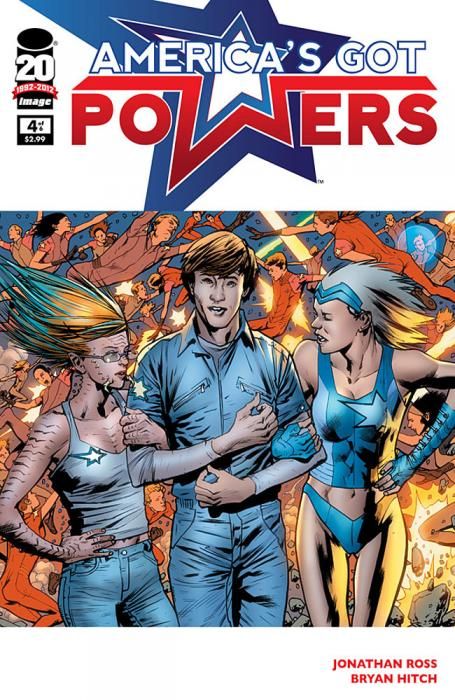"America's Got Powers" #4 brings the series back from limbo as writer Jonathan Ross and artist Bryan Hitch get back to their extreme-sports superhero reality show.
Or rather, don't. Because things have moved quite far from that concept into more disappointingly generic territory, as Tommy is trapped between opposing sides of a war between people with powers and those who want to control people with powers.
It's a disappointing step for a series that started out with an original premise and unique look at the world of superpowers. It isn't completely devoid of ideas, and it's certainly a change that Tommy's "allies" in the underground are brutal, disorganised and generally not much like the cliched oppressed altruists you'd expect, but at the same time, it's starting to feel like a story we've read before.
There are interesting issues arising on a more technical level, too. In a recent CBR interview, Hitch discussed his interest in taking a greater role in the creative process than Marvel allowed at the time. With that (and Hitch's "Story" credit) in mind, it's hard not to view this issue's abundance of double-page spreads as a function of the artist, rather than the writer, assuming you're familiar with the past form of both. Double-page spreads are currently occupying an odd space. In theory, the landscape format seems well-suited to digital reading, but in practice, the limited size of tablet devices means that they're often presented too small to read without zooming in.
The result of Hitch's work, then, is a comic that seems tailor-made for the physical experience -- so more's the pity that I read it on an iPad. Almost half of the comic is contained on double-page spreads (12 double pages versus 13 single pages) which suggests that if you want to read it, you should buy a physical copy. It's too early to say whether this is going to become a bigger issue akin to the gradual disappearance of thought balloons, but "America's Got Powers" is perhaps the first comic I've read that, strictly from a technology perspective, feels behind the times.
That's not to say that it doesn't look (and read) well, but whether it's the delays or the story choices, it's lost a lot of its momentum. Even the excellent value (26 pages for $2.99!) can't quite compensate. It'll read better in the trade, there's no doubt about that -- but the series needs to recapture some of its initial momentum for the rest of its single issues.

